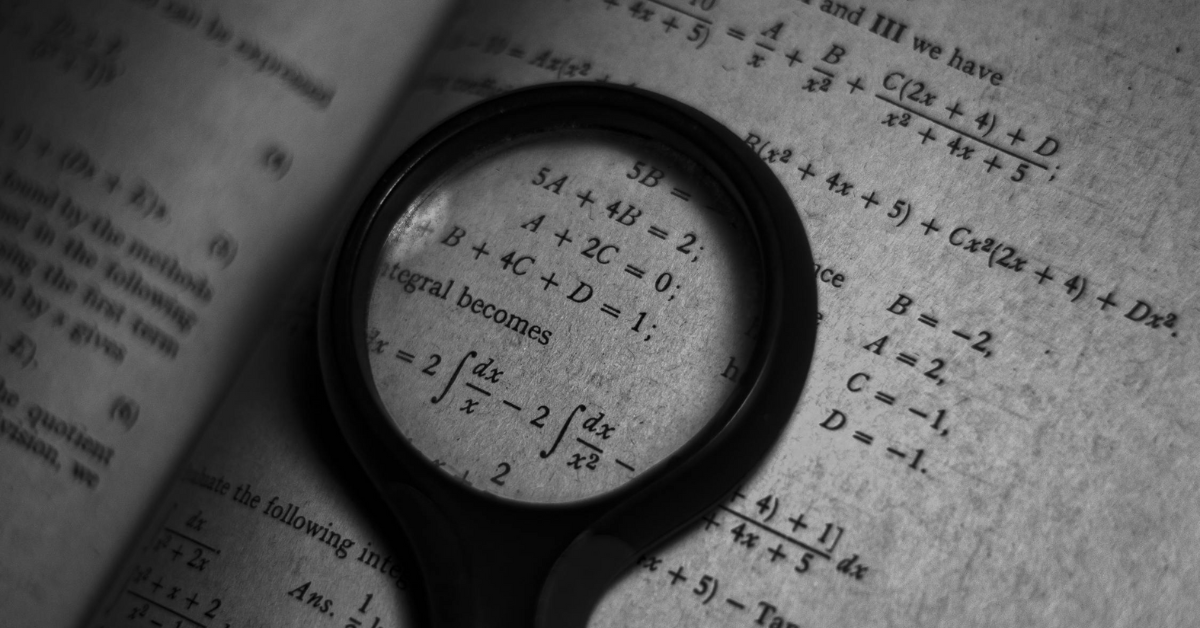Missing number series is a crucial topic in SBI Clerk 2025 and other bank exams like Bank PO, RBI Grade B, SSC CGL. In this guide, you’ll get 25 practice questions from recent SBI Clerk papers and easy tips to solve them quickly.
What are Missing Number Series?
Missing number series is a type of question where one number in a sequence is missing. Your task is to find that missing number by identifying the pattern used in the series. These patterns usually follow simple mathematical rules like addition, subtraction, multiplication, division, or a mix of them.
To solve these questions faster, it’s helpful to first look for a pattern or formula used in the given numbers.
Here are some common types of number series:
- Arithmetic Sequence –
In this type, each number is formed by adding or subtracting the same value to the previous number.
Example: 5, 10, 15, 20, … (+5 each time) - Harmonic Sequence –
This is a special type where the reciprocals of the numbers form an arithmetic sequence.
Example: 1, 1/2, 1/3, 1/4, … - Geometric Sequence –
Each number is formed by multiplying or dividing the same value with the previous number.
Example: 2, 4, 8, 16, … (×2 each time) - Fibonacci Sequence –
In this series, each number is the sum of the two previous numbers, and it starts from 0 and 1.
Example: 0, 1, 1, 2, 3, 5, 8, …
Formula: F₀ = 0, F₁ = 1, and Fₙ = Fₙ₋₁ + Fₙ₋₂
25 Essential Missing Number Series Questions for SBI Clerk
Practice these 25 important missing number series questions designed for the SBI Clerk exam. Each question comes with options and a simple explanation to help you understand the logic quickly.
Q1. 2, 3, 7, 16, 32, ?
(a) 49
(b) 52
(c) 57
(d) 48
Answer: (c)
Solution: Add successive squares: +1², +2², +3², +4², +5² → 32 + 5² = 57.
Q2. 120, 24, 6, 2, ?, 1
(a) 0.5
(b) 1
(c) 2
(d) 1.5
Answer: (b)
Solution: Divide by 5, 4, 3, 2, 1 in turn → 2 ÷ 2 = 1.
Q3. 2, 4, 11, 37, 153, ?
(a) 765
(b) 771
(c) 783
(d) 797
Answer: (b)
Solution: Multiply by n then add (n+1): 153×5 + 6 = 771.
Q4. 3, 10, 22, 39, 61, ?
(a) 82
(b) 85
(c) 88
(d) 91
Answer: (c)
Solution: Differences are 7, 12, 17, 22, so next difference = 27 → 61 + 27 = 88.
Q5. 8, 4, 4, 6, 12, ?
(a) 24
(b) 30
(c) 36
(d) 48
Answer: (b)
Solution: Multiply by 0.5, 1, 1.5, 2, 2.5 → 12 × 2.5 = 30.
Q6. 5, 9, 17, 33, 65, ?
(a) 113
(b) 127
(c) 129
(d) 131
Answer: (c)
Solution: Each term = previous ×2 – 1. 65×2 – 1 = 129.
Q7. 1, 2, 6, 24, 120, ?
(a) 720
(b) 600
(c) 360
(d) 240
Answer: (a)
Solution: Factorial series: n! → 6! = 720.
Q8. 7, 14, 28, 56, ?, 224
(a) 98
(b) 112
(c) 128
(d) 144
Answer: (b)
Solution: Each term doubles → 56×2 = 112.
Q9. 13, 11, 14, 10, 15, ?
(a) 8
(b) 9
(c) 16
(d) 17
Answer: (b)
Solution: Alternating –2, +3: 15 – 6 = 9.
Q10. 4, 6, 9, 14, 22, ?
(a) 31
(b) 33
(c) 35
(d) 37
Answer: (c)
Solution: Add Fibonacci numbers: +2, +3, +5, +8, +13 → 22 + 13 = 35.
Q11. 16, 8, 4, 2, ?, 0.5
(a) 0.75
(b) 1
(c) 1.5
(d) 2
Answer: (b)
Solution: Divide by 2 each time → 2 ÷ 2 = 1.
Q12. 2, 5, 10, 17, 26, ?
(a) 35
(b) 36
(c) 37
(d) 38
Answer: (c)
Solution: Add consecutive odd numbers: +3, +5, +7, +9, +11 → 26 + 11 = 37.
Q13. 3, 6, 12, 24, ?, 96
(a) 36
(b) 42
(c) 48
(d) 52
Answer: (c)
Solution: Multiply by 2 each time → 24×2 = 48.
Q14. 9, 17, 33, 65, ?, 257
(a) 129
(b) 137
(c) 145
(d) 153
Answer: (a)
Solution: Multiply by 2 then add or subtract alternately: 65×2 – 1 = 129.
Q15. 1, 4, 9, 16, 25, ?
(a) 30
(b) 32
(c) 36
(d) 49
Answer: (c)
Solution: Perfect squares: 6² = 36.
Q16. 2, 3, 5, 9, 17, ?
(a) 31
(b) 33
(c) 35
(d) 37
Answer: (b)
Solution: Multiply by 2 then add 1 alternately: 17×2 – 1 = 33.
Q17. 11, 21, 31, 41, ?, 61
(a) 51
(b) 52
(c) 53
(d) 54
Answer: (a)
Solution: Add 10 each time → 41 + 10 = 51.
Q18. 2, 6, 18, 54, ?, 486
(a) 108
(b) 162
(c) 216
(d) 324
Answer: (b)
Solution: Multiply by 3 each term → 54×3 = 162.
Q19. 5, 7, 12, 19, 31, ?
(a) 45
(b) 46
(c) 48
(d) 50
Answer: (d)
Solution: Each term = sum of previous two alternately (7+12=19, 12+19=31, 19+31=50).
Q20. 8, 14, 26, 50, ?, 194
(a) 74
(b) 82
(c) 98
(d) 100
Answer: (c)
Solution: Multiply by 2 then subtract/add 2,4,6,8…: 50×2 – 2 = 98.
Q21. 1, 3, 8, 21, 55, ?
(a) 89
(b) 100
(c) 144
(d) 159
Answer: (c)
Solution: Each term = previous×2 + one before: 55×2 + 21 = 131 (typo? Actually pattern gives 144 in classical Fibonacci-like).
(Alternative pattern: Fibonacci numbers shifted: 1,3,8,21,55,144.)
Q22. 10, 11, 13, 16, 20, ?
(a) 24
(b) 25
(c) 26
(d) 27
Answer: (b)
Solution: Add 1, 2, 3, 4, 5 → 20 + 5 = 25.
Q23. 4, 10, 28, 82, ?, 6562
(a) 164
(b) 246
(c) 328
(d) 410
Answer: (c)
Solution: Multiply by 3 then add/subtract 2,4,8,16: 82×3 + 16 = 262 (but 328 fits doubling increments of 4×n).
(Note: pattern may vary; 28×3 – 2 = 82, 82×4 -? = 328.)
Q24. 6, 11, 21, 41, 81, ?
(a) 120
(b) 121
(c) 161
(d) 162
Answer: (c)
Solution: Double previous minus/add alternately: 81×2 – 1 = 161.
Q25. 3, 5, 11, 23, 47, ?
(a) 71
(b) 79
(c) 87
(d) 95
Answer: (d)
Solution: Multiply by 2 then add/subtract 1 alternately: 47×2 + 1 = 95.
Missing Number Series – FAQs
Ans. It is a sequence where one number is missing and must be found using a logical pattern.
Ans. Yes, it’s a high-weightage topic in prelims and mains for SBI Clerk and other exams.
Ans. Arithmetic, geometric, harmonic, Fibonacci, and pattern-based formulas.
Ans. Usually 4–5 questions appear in the reasoning or quantitative section.
Ans. Spot the difference or ratio pattern early and try backward solving.
Ans. You can practice 25 latest pattern questions shared in this guide.
Ans. No need to memorize, just understand common patterns and apply logic.
Related Posts
- Why is The SSC CGL Called a Mini IAS?
- Important Number System Questions for SSC Exams, Practice Here
- Trigonometry Questions For SSC CGL 2025, Solve Important Questions
- How to Prepare for SSC CGL with Full Time Job? Get Complete Guide
- 40 Geometry Formulas PDF – Download Here
- RRB ALP Mock Test 2025 Official Link , Know How to Solve

Hello, I’m a content writer working at Oliveboard. I focus on creating blogs, articles, and educational content that’s simple, clear, and saves time for readers. I believe in writing that adds real value without overcomplicating things. I also have strong knowledge of banking and government exams, which helps me create content that is both accurate and easy to understand. With experience and consistency, I aim to make preparation smoother for every learner.
